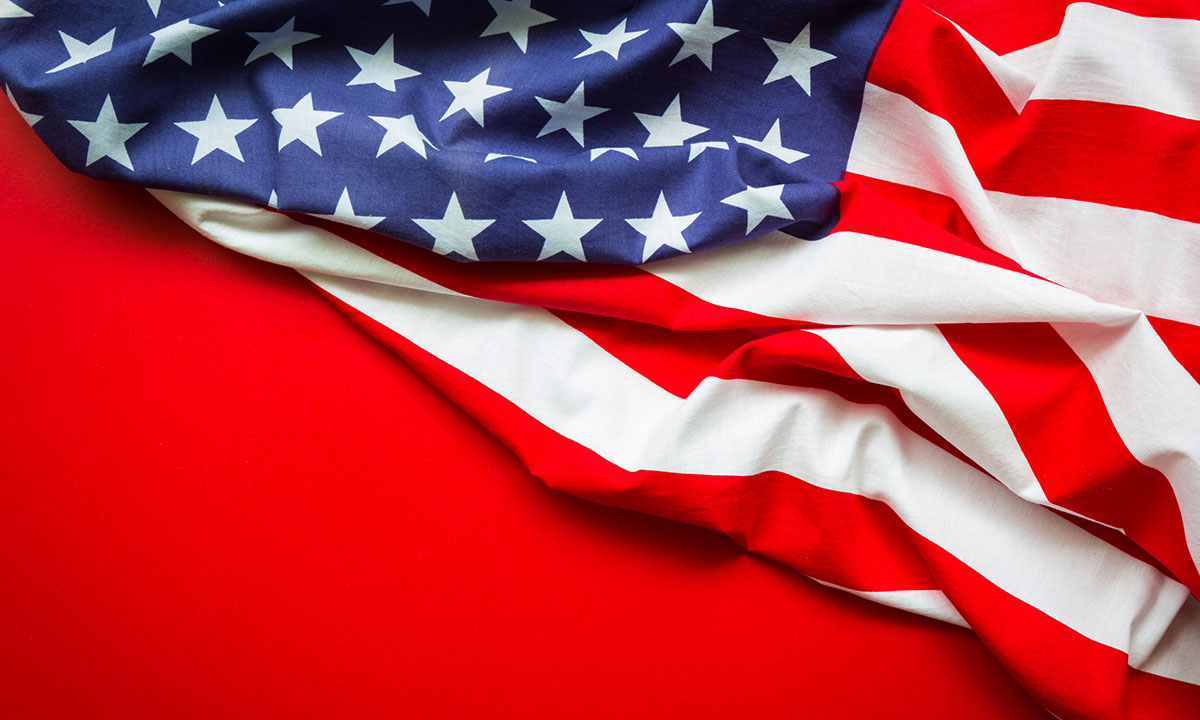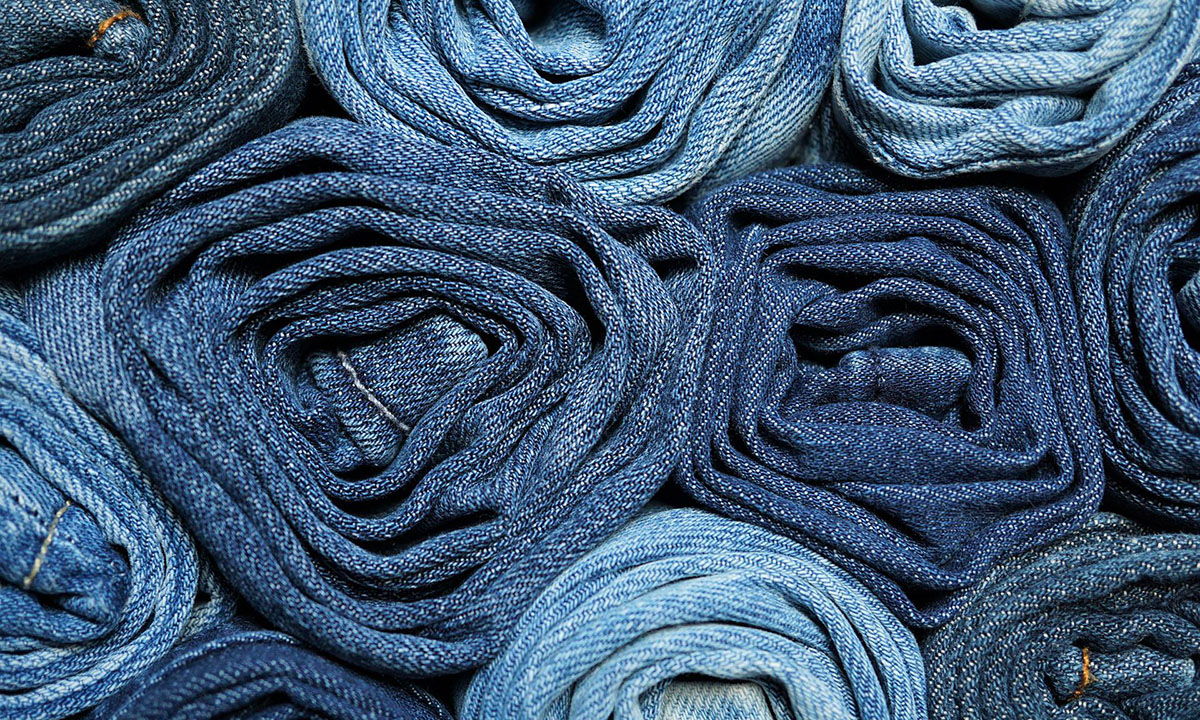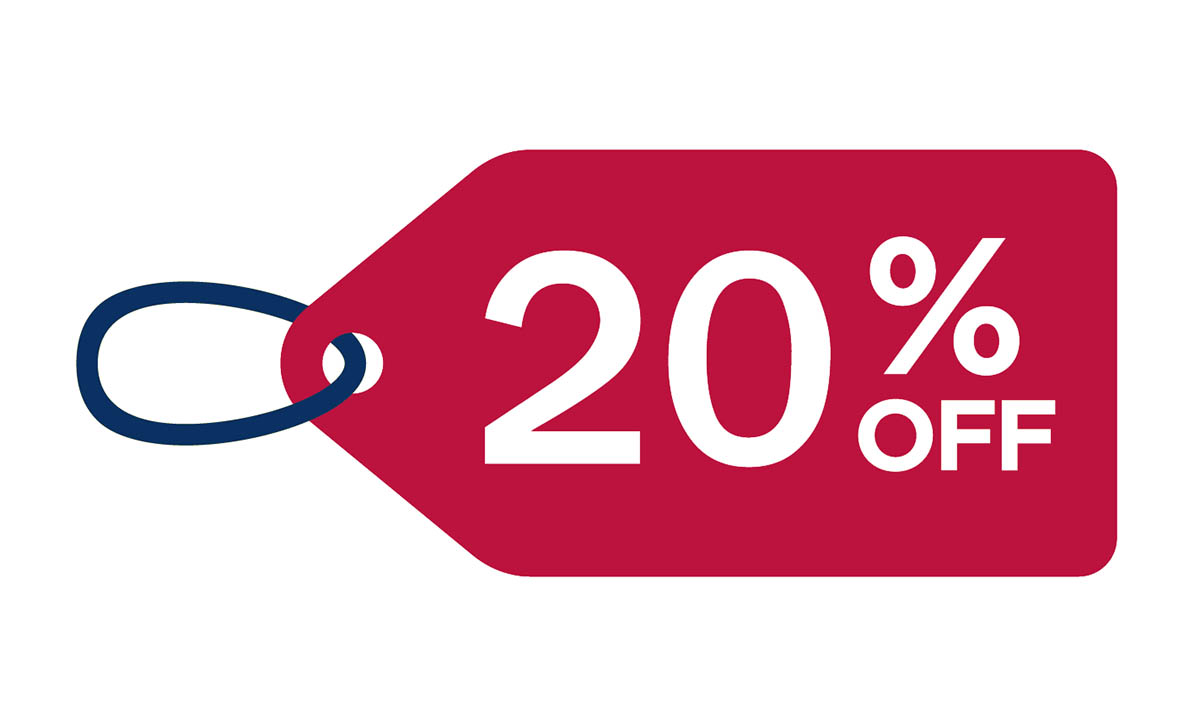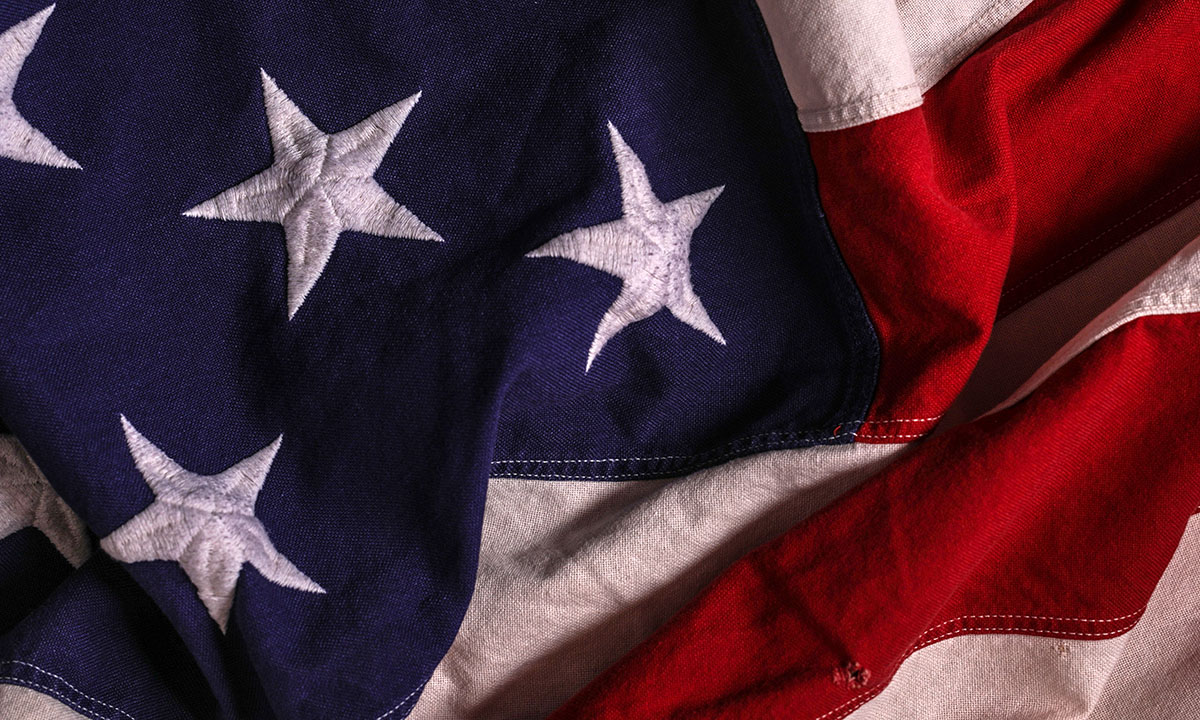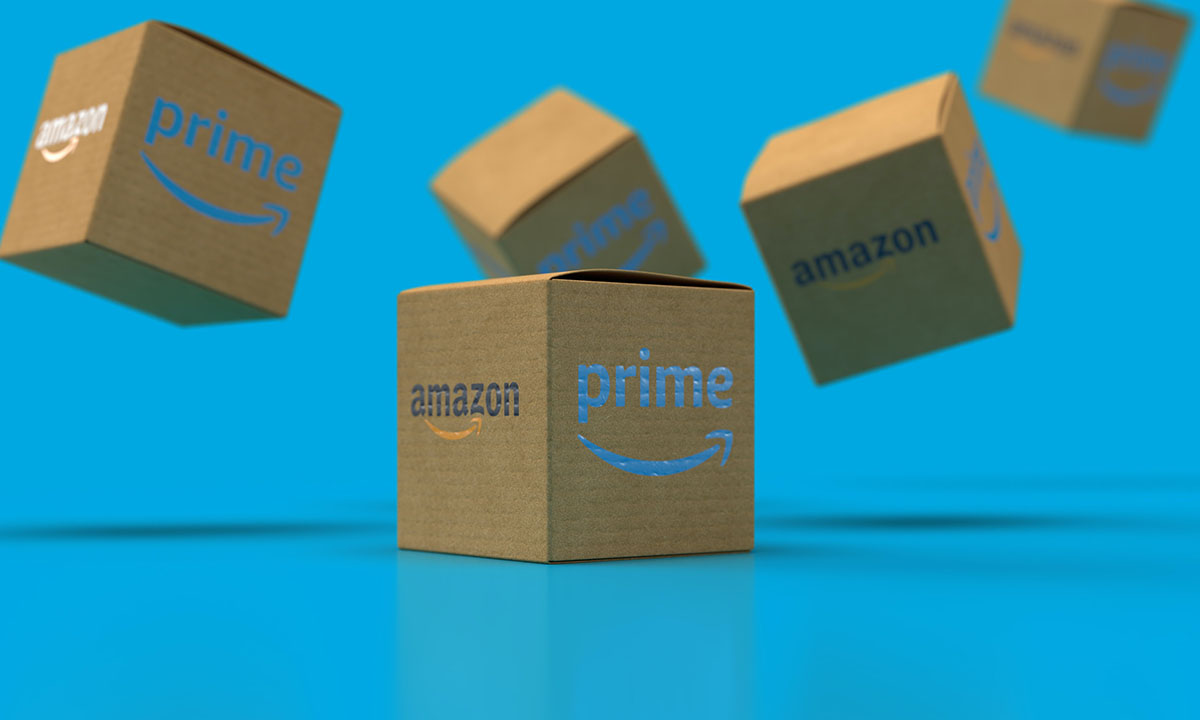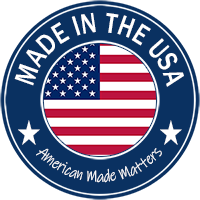Some of the links on this page may be affiliate links. As an Amazon associate, I earn from qualifying purchases. There is no additional cost to you when you make a qualifying purchase via an affiliate link. Click here for the full affiliate disclosure.
Exposing Deceit: How Word Salad and Misleading Labels Trick You
Made in the USA is good advertising. Companies know that products made in the USA have a reputation for quality. They’re aware Americans are willing to pay a little more for brands made in the USA and that “made-in-USA” is a deciding factor for many of us when we make a purchase. Sadly, it’s also why many brands intentionally attempt to deceive American consumers with what I like to call “fake made in USA advertising,” so consumers believe their products are made in the USA when they’re not.
Fake made in USA advertising is a huge pet peeve of mine, so in my case, it’s a surefire way to turn me away from their brand, even when an American-made option isn’t available. Unfortunately, a lot of consumers are deceived.
This article looks at the top ways brands try to trick you into thinking their imported products are made in the USA so that you can be on the lookout for shady product descriptions and unscrupulous labeling and become an expert at weeding through the search results.
First Things First: What the FTC Says About Fake Made in USA Advertising
According to the Federal Trade Commission, for a product to make a “Made in USA” claim, all significant parts, processing, and labor must originate in the USA. The rule applies to implied claims and unqualified representations, and using images of the United States flag can trigger the rule if it’s being used to imply U.S. origin. Companies that make false “Made in USA” claims can face financial penalties.
- “All or virtually all” labor and materials must originate in the USA.
- The FTC rule applies to express and implied claims.
- Companies can face civil penalties for false and misleading “Made in USA” claims.
Regardless of the FTC rule, many brands deliberately mislead consumers by implying their products are made in the USA through deceptive language, labeling, and imagery.
Word Salad: “Made with Pride” and Other Word Games Companies Play
“We’re an American brand that manufactures our products with pride!”
“Our products are designed with pride in our U.S. facility and manufactured by trusted partners.”
I can’t tell you how often I’ve encountered sentences like this looking for products made in the USA. Early on and against my better judgment, I’d give these brands the benefit of the doubt with a call or an email. It went something like this.
“Hello, I happened upon your website looking for widgets that are made in the USA. I see you’re an American brand that manufactures your products with pride. However, I can’t verify if your widgets are made in the USA. Are your widgets made in the USA?”
I usually get a response like this.
“Hi! Thank you for reaching out. We are an American brand. All of our widgets are designed in the United States at our headquarters in {city, state}, USA. We have global partners that craft our widgets with pride in facilities around the world.”
A classic case of fake made in USA advertising.
If a product is “all or virtually all” made in the USA according to the FTC guidelines, the brand isn’t going to dance around the subject. It’s a difficult standard to achieve and comes with benefits. When a brand meets the FTC requirements, it will be bold and clear in its “Made in USA” advertising and labeling. Look out for indirect statements or “word salad” that never directly expresses “Made in the USA.” Examples of “fake made in USA advertising” include:
- We’re and American brand.
- True American quality
- Made with pride
- Made in America
Deceptive Labels: When a Symbol Speaks Louder Than Words
Companies use a variety of tactics to create the illusion that their products are made in the USA, even when they’re not. Sometimes, it’s with the words they use, while other times, it’s how they use symbols and imagery, leading consumers to make assumptions. The Federal Trade Commission (FTC) outlines how these misleading tactics can work in their guidelines.
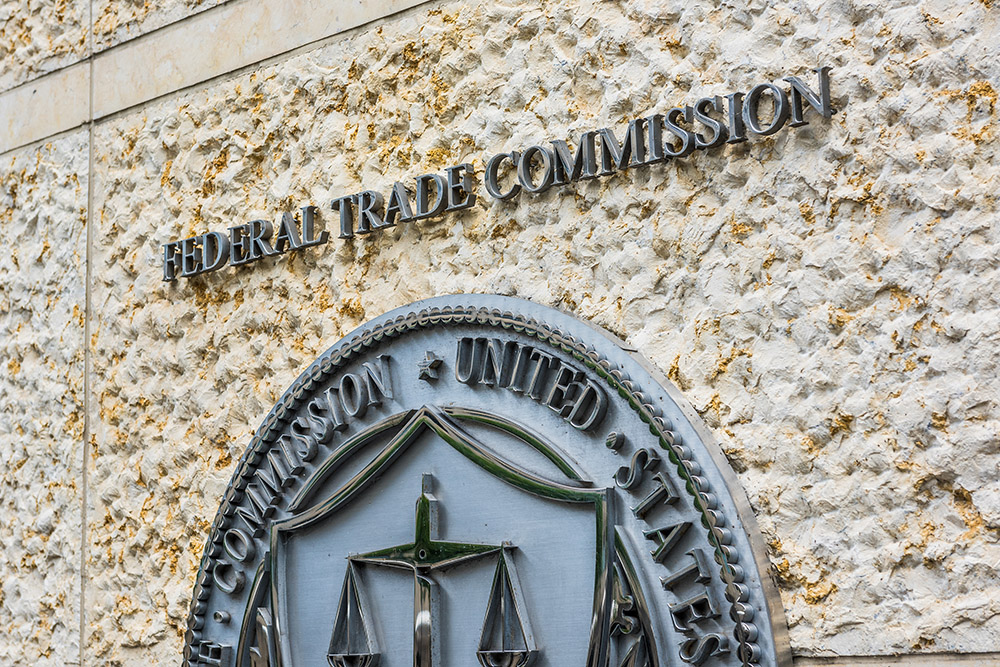
In identifying implied claims, the FTC focuses on the overall impression the advertising, label, or promotional material conveys to consumers. Depending on the context, U.S. symbols or geographic references (for example, U.S. flags, outlines of U.S. maps, or references to U.S. locations of headquarters or factories) may convey a claim of U.S. origin either by themselves, or in conjunction with other phrases or images.
FTC.gov
Regardless of the FTC rule, companies do it all the time. Let’s go over the most common deceptive labeling I come across.
Flagging Deception: How False Flags Trick Consumers
If you saw the image below on a product’s packaging, brand website, or other advertising, what would you assume? Would your overall impression be that the product is made in the USA?
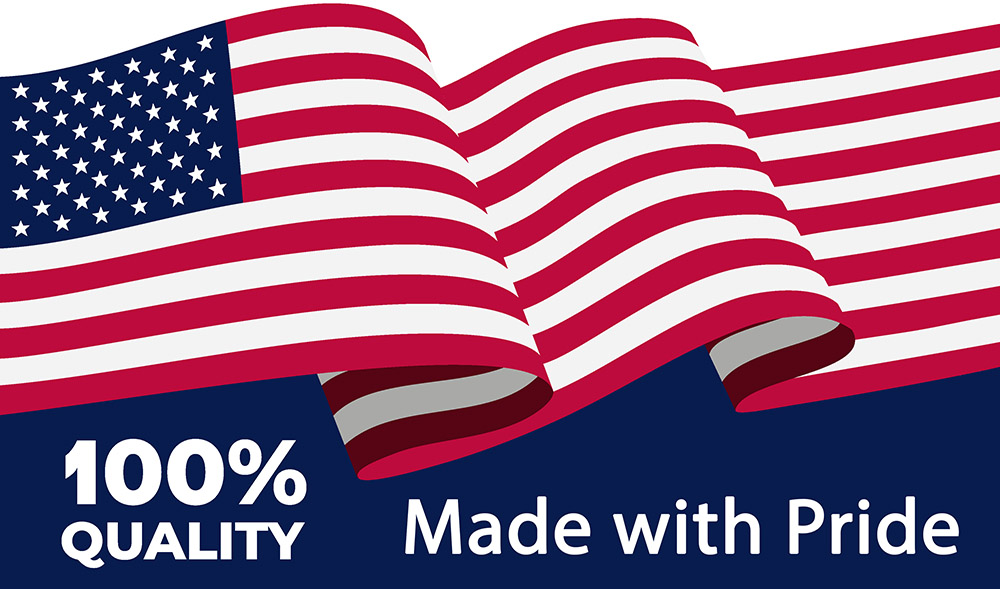
It doesn’t explicitly say it, but it implies it.
The word “Made” alongside the United States flag or a variation of it might lead one to believe an imported product is made in the USA. Sprinkle in words like “pride” and “quality” when statistics say that two-thirds of Americans believe products made in the USA are better quality, and you have the recipe for misleading many Americans who factor in where a product is made in their buying decisions.
Mapping Deception: When the Map Leads Us Nowhere
Using a map of the United States or an outline of it is another way that graphics can mislead consumers. You might come across an isolated map, a map with words or phrases like the example below, or a map with a push-pin in the location of the brand’s world headquarters.

Many American brands don’t manufacture their products domestically. Take Levi Strauss & Co., for example. Although the company originated in the United States and has its headquarters in San Francisco, California, Levi’s jeans are made in Bangladesh, Egypt, India, Indonesia, Mexico, Sri Lanka, and Vietnam.
Decoding Deception: Other Subliminal Messaging in Fake Made in USA Advertising
It doesn’t end with the United States flag and a map of our land. Other imagery includes:
- Red, white, and blue branding
- Stars and/or stripes
- Eagles, eagles heads, and eagles wings
- The Statue of Liberty or a torch
- The Liberty Bell
- Emblems, medallions, or badges that appear to be official
Brands that do this want you to assume their products are made in the USA. Unfortunately, it’s the other way around. You need to assume they’re not made in the USA. You can always reach out to the company and ask.
Multiple tactics of fake made in USA advertising make an appearance in the example below.
Case Study: A Fake Made in USA Advertising Example in Action
I have to tell you that the following section is original content that contains copyrighted material. It is considered fair use. The use of the material is for a specific purpose, such as criticism, commentary, or education, and for educational and informational purposes only. The use of the material is permitted under Section 107 of the Copyright Act.
Here is an example of a brand that was brought to my attention via a hobby. I do some canning, so when I came across this brand, my eye was naturally drawn to the flag on the box. Take a look.
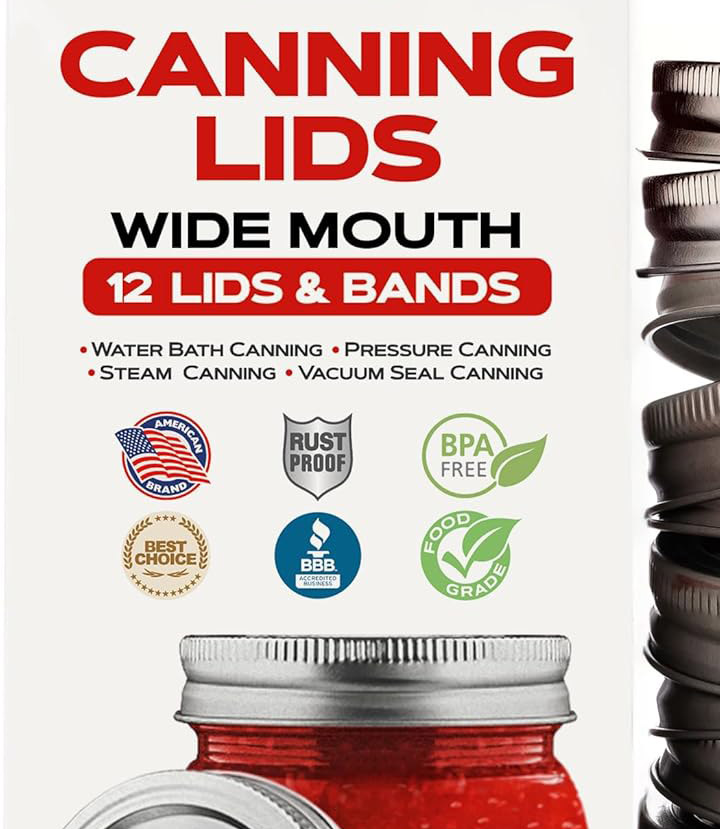
Ah, yes, an “American Brand.” My fake made in USA advertising radar alerts a warning. I know where this is going.
Here it is cropped, for those of you on mobile.
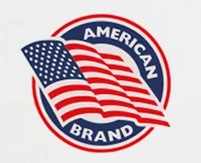
Upon visiting the brand’s website, the main page didn’t mention that any of the products are made in the USA. As I said, when a brand achieves “Made in the USA” according to the FTC rule, it’ll be clear right away.

The prominent red map outline with “USA” in white letters at the top of the page looked like a good place to continue my investigation. That page offered product links and an F.A.Q. style guide. Under “Key Features”, I found the following statement, “High-quality {brand} lids are more affordable than many canning lids made in the USA.” It reads like word salad to me and uses the exact term “made in USA” which can trigger search results, an issue we’ll get to later.
The statement doesn’t answer my question, “Is this brand made in the USA?” The way it reads could mean it’s a made-in-USA brand that’s more affordable than others or an imported product that’s more affordable than many made-in-USA brands. Yes, I’m just as confused. I had to keep digging to verify my suspicions.
Amazon has its own requirements in which sellers are required to provide the country of origin for all product listings according to U.S. Customs and Border Protection rulings and legal decisions. You’ll have to trust me that it’s the same product pictured above, or the screenshot will be so long that you won’t be able to see it for yourself. And there you have it. Country of origin: China.
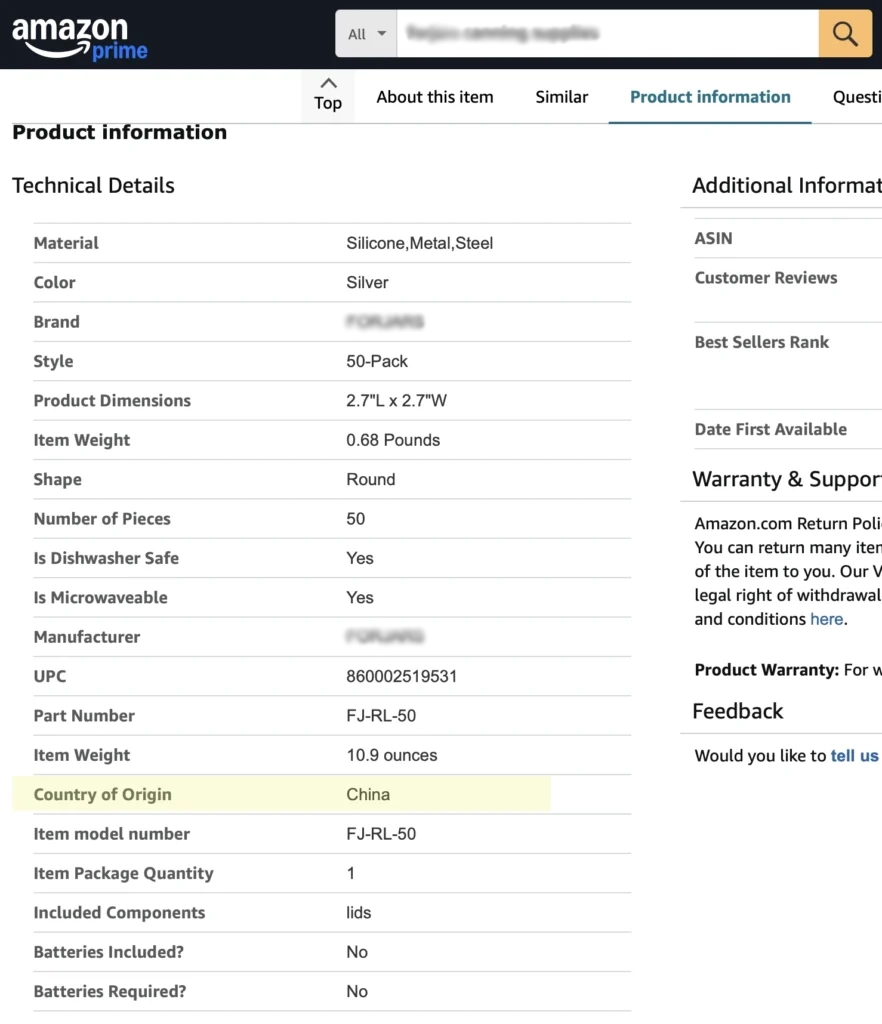
But just for good measure and due diligence, I used the chatbot feature on their website and asked. The following day, I received this email reply:
Hello Michelle, At this time our lids are manufactured overseas in China through a partnership with a closely aligned manufacturing facility; however, in line with our commitment to fostering American manufacturing, we are working tirelessly at overcoming the hurdles to bring manufacturing to the USA. We have implemented rigorous quality control measures to ensure that our lids meet our stringent criteria requirements. As avid canners ourselves, we understand the paramount importance of having lids of exceptional quality. Thank you for your patience in this matter.
What does “closely aligned” even mean? I know what it means, and I know what it is: corporate word salad. If it’s true they are working tirelessly, I can appreciate that! But at this time, these lids are made in China, and it’s my opinion the packaging and website are misleading. Needless to say, I don’t buy that brand.
‘Merica! Use and Abuse of Consumer Patriotism
Not all American brands manufacture their products in the USA. This next section takes a closer look at how companies use “America” and “American” to create confusion and false assumptions in American consumers.
An American Brand: Not All American Brands are Made in America
I already touched on this in the section about deceptive labeling, but let’s dive a little deeper.
Countless brands and companies are American but don’t manufacture their products in the USA. Some of them use a tactic that exclaims they’re an American brand to mislead consumers into believing that the products are made in the USA, which is often far from the truth.
Here are some things to look out for:
- Simply stating “American Brand” or similar phrases to suggest or imply a Made-in USA connection.
- Using imagery like eagles, flags or stars that evoke patriotism but don’t reflect where a product is made.
- Creating a text link with the phrase that goes to an “about” page that talks about their U.S. origin or headquarters without mentioning the origin of the actual product.
- Featuring banners, stickers, or graphics on packaging, websites, or ads to imply domestic manufacturing.
It’s best to look at American Brand like a red flag rather than the U.S. flag. Better to be pleasantly surprised than sorely disappointed.
Made in America and American-Made: Navigating The Gray Area
The terms “Made in America” and “American-Made” are tricky. While they’re often used interchangeably with “Made in USA,” it’s complicated. Here at Made in the USA Matters, I use both terms to refer to products truly made in the USA, and I’m sure you’d agree that when we talk about American-made, we mean products that originate in the U.S.A.
The issue arises when companies use “Made in America” or “American-Made” in a way that’s technically true but misleading. After all, “America” refers to the entire continent, which includes Canada and Mexico and can refer to all of the countries in Central and South America.
I often see this with Southwestern products, like cowboy boots or hats, where the brand is based in Texas, but the products are actually made in Mexico. Technically, those items are “American-made,” but it’s often used to convey “Made in USA”.
The Search for the Truth: How to Avoid Fake Made in USA Advertising on Search Engines
If you’ve ever searched for products made in the USA, you know the struggle. Google, once hailed as the best search engine for getting the most accurate and relevant results, can sometimes feel like a maze of misinformation. For someone like me, who spends countless hours sifting through search results to find truly American-made products, the frustration is all too real. I’m sure it frustrates you, too.

The truth is that not all search results are created equal. Some are misleading by design, while others are the by-product of algorithms that prioritize profits and popularity over precision.
Intentionally Misleading Results: How Companies Manipulate Search Results for Profit
Some companies intentionally manipulate search results by crafting website content designed to rank for specific keywords-even when it’s deceptive. For instance, a company that manufactures widgets overseas might sneak phrases like “widgets made in the USA” into their copy without clarifying where their products are made. We see that in action with the canning lids example we discussed.
Take another example that reorganizes the key phrase: “If you’re searching for widgets in the USA, ours are made with the best materials!” It sounds promising, but it cleverly sidesteps the critical question: Where are the widgets made?
Even major retailers play this game, using tactics that can lead you down a rabbit hole of irrelevant results. One common strategy is creating landing pages with search query terms designed to match your search terms. For example, if you search for “shoes made in USA,” you might click on a result like myfavoriteretailer.com/search.php?shoes-made-in-usa. At first glance, it seems promising. After all, the URL contains your exact query. But when you land on the page, none of the shoes are made in the USA.
Many major retailers frequently use this approach to capture search traffic, even if the products displayed don’t match your intent. It wastes valuable time that you could be spending finding genuine American-made products. Or even worse, you think you’re purchasing a product made in the USA that isn’t.
These tactics exploit the trust we place in search engines and the assumption that what we click on will align with what we’re looking for. For tips on navigating these challenges and uncovering authentic American-made results on Amazon, check out this helpful resource, One Easy Trick to Find Made in the USA Products on Amazon.
Unintentionally Misleading Results: How Google’s Algorithm Can Lead You Astray
Then there’s the unintentional side of misleading results, where Google’s algorithms prioritize factors that don’t always align with your needs. Two major culprits are sponsored ads and website authority.
- Sponsored Ads: When you search for something like “stand mixers made in the USA,” Google is likely to correctly interpret your query as a shopping intent. What you’ll often get are ads from retailers bidding on terms like “stand mixers”-but not necessarily made in the USA. Those carousels of products you see at the top, and often between actual search results? They’re there because someone paid for them to be, not because they match your query.
- Website Authority: Google also prioritizes websites with higher authority, measured by factors like backlinks and domain age. That means larger, well established sites often outrank smaller, niche blogs-even if the smaller site has the exact information you’re searching for.
Imagine you’re looking for the only slow cooker made in the USA. My website, Made in the USA Matters, has a detailed guide on it, but if CNN publishes a general article about slow cookers in America, their site will outrank mine. Why? CNN has been around longer, has more backlinks, and commands greater authority in Google’s eyes – even if my article answers your question and theirs doesn’t.
Search Smarter, Not Harder: Tips for Spotting the Real Made in USA Search Results
With a little strategy, you can cut through some of the noise and find what you’re really looking for. Here are some tips:
- Check the headline for “Made in the USA”: A trustworthy result often includes “Made in the USA” in the headline or title. That space is valuable and most companies won’t waste it to mislead a few stray searches.
- Look for bolded keywords in snippets: When scanning Google’s results, pay attention to the bold words in the snippet. These indicate where your query matches the page content. Does your query appear exactly, or is it mixed up, potentially indicating a misleading result?
- Scan for clear product descriptions: Once you land on a page, skim the content. Honest sellers and directories will make it clear if a product is made in the USA.
The Power of a Name: When a Brand Name is Fake Made in USA Advertising
It’s easy to assume that a company with a name that includes “USA” or a reference to a specific American location automatically means their products are made in the USA. But it’s often not the case.
Some companies cleverly use brand or company names that evoke an American connection, even if their products are manufactured elsewhere. For example, a company called “T-shirts USA” might give the impression that their shirts are made in the USA (and even capture search results for “T-shirts made in the USA”), but they could be outsourced or even based, in another country. Similarly, a brand with “Montana” in the name might sound like it’s based in Montana, but the products may be made overseas.
These brand names are designed to tap into consumers’ trust and patriotism, steering them into thinking they’re supporting American-made goods when, in reality, they might not be. It’s always worth doing a little bit of research to ensure what you see in a name matches the product’s origin.
Don’t Fall for Fake Made in USA Advertising: Key Tips
Alright, you’ve got the knowledge to spot the most common ways companies try to trick you. To recap:
- Don’t Buy Into Buzzwords: Phrases like “American made” or “Made with Pride” are catchy, but they don’t always mean “Made in the USA” Check the product descriptions.
- Flags and Maps Aren’t Enough: Symbols meant to invoke your patriotism might make you think it’s made in the USA, but it’s not that simple. Look for “Made in USA”.
- “Made in America” Can Be Tricky: “America” doesn’t always mean the United States so never assume.
- Just Because it’s an American Brand Doesn’t Mean It’s Made Here: Don’t get fooled just because a company is based in the U.S. Many American brands produce products abroad.
- Watch Out for Marketing Tricks: Some brands will use clever wording or set up their website to make it seem like their products are all American. If you’re not sure, check the F.A.Q., email, or call the company to ask.
Next time you’re shopping, you’ll know what to look for and what to avoid. Remember, it doesn’t take much to find products that really support American workers and businesses!

